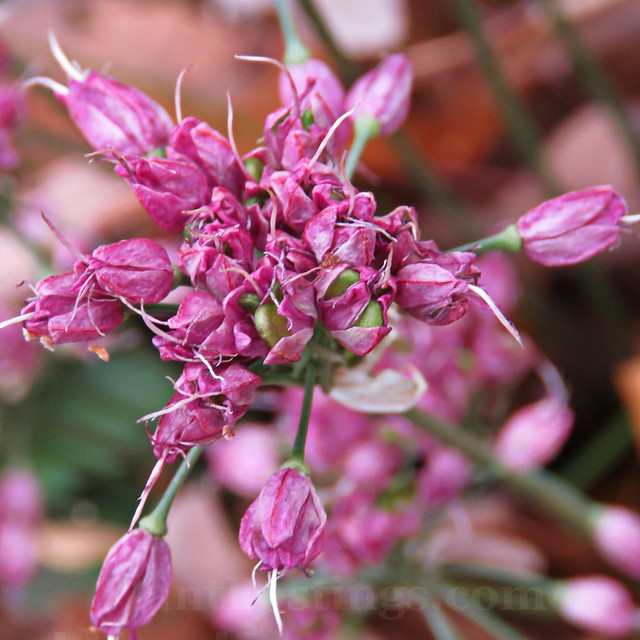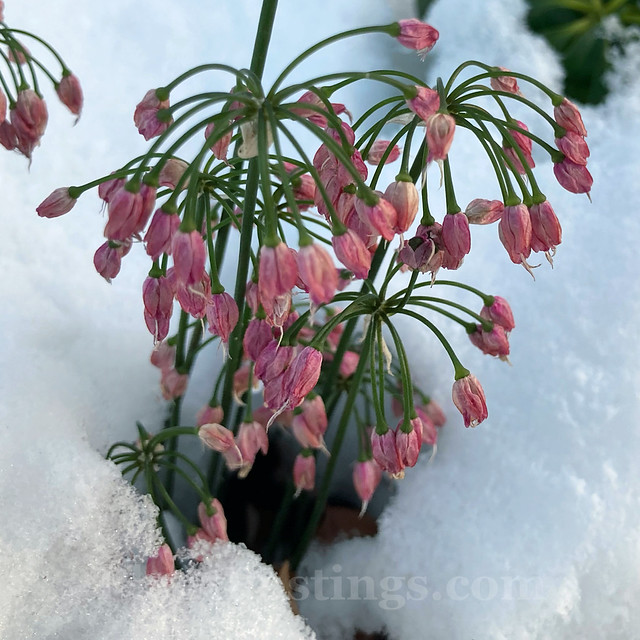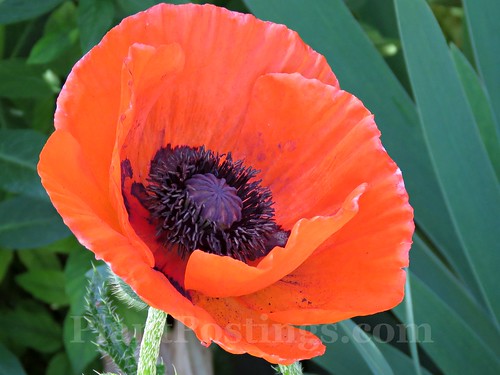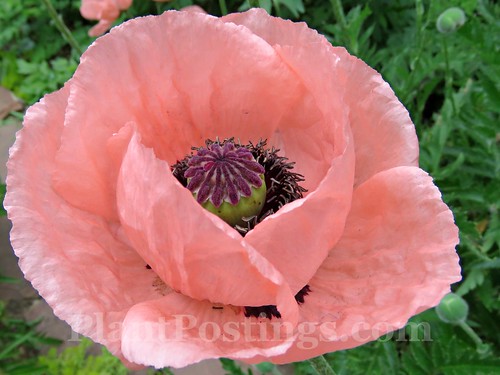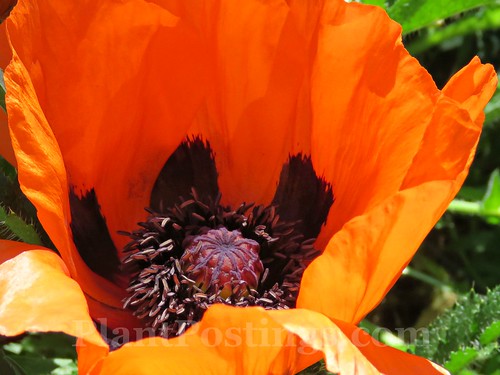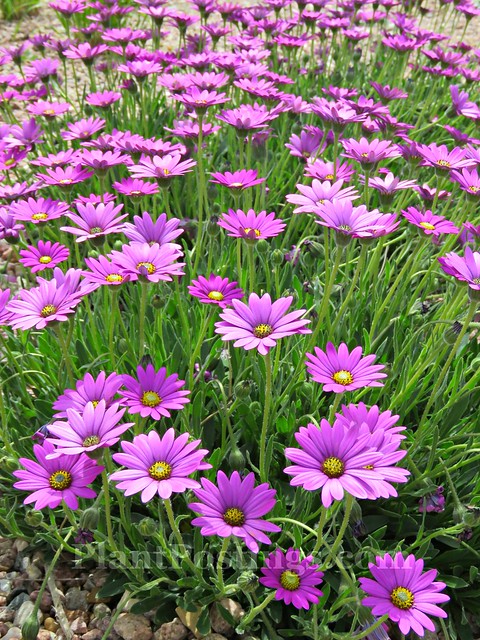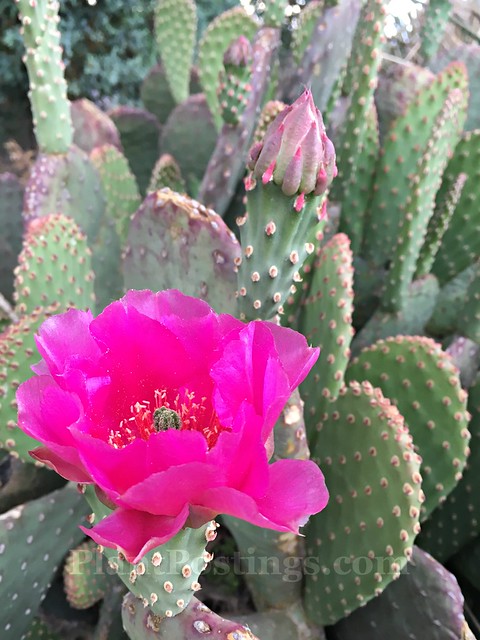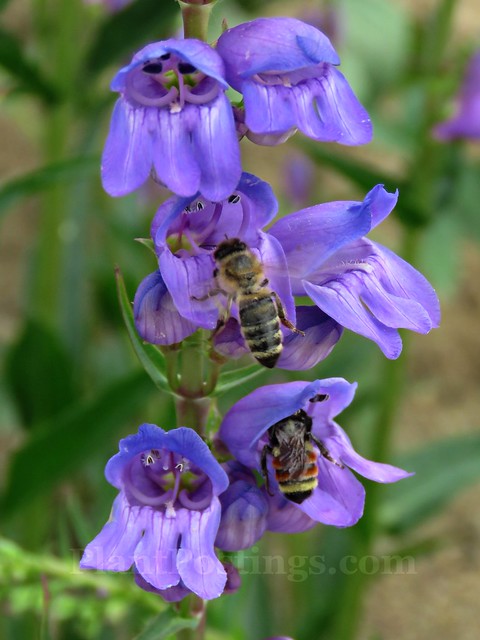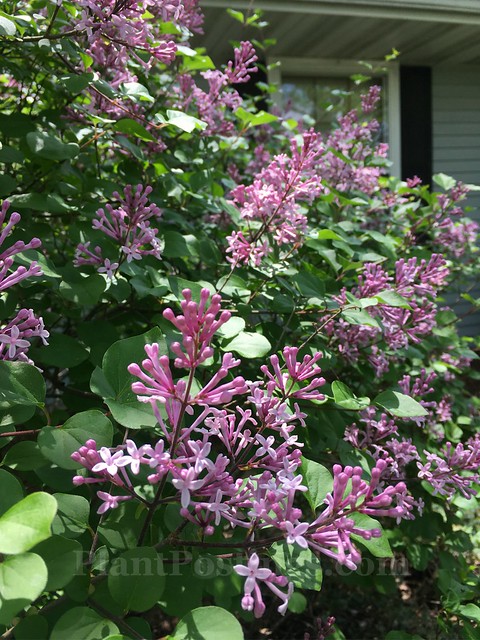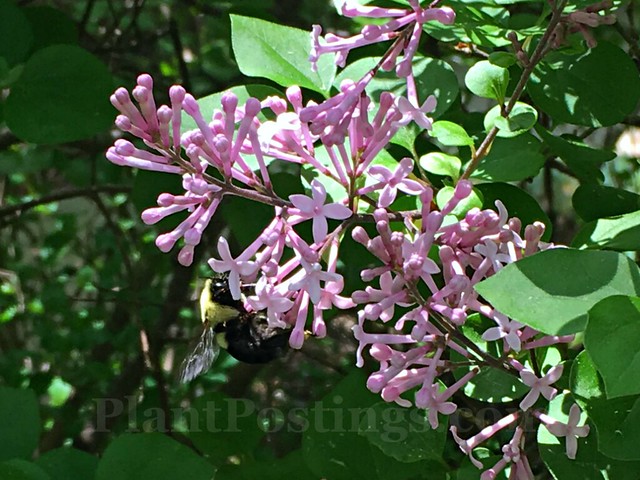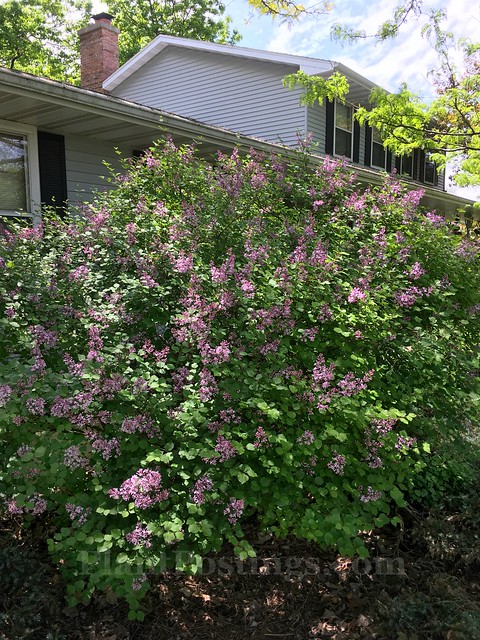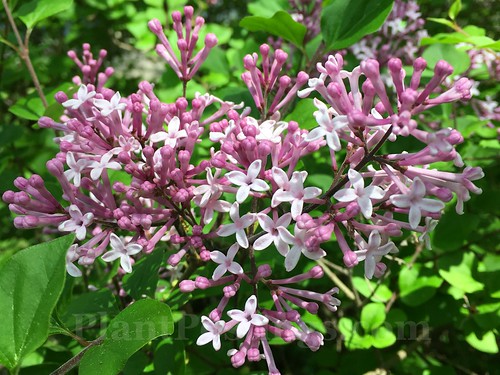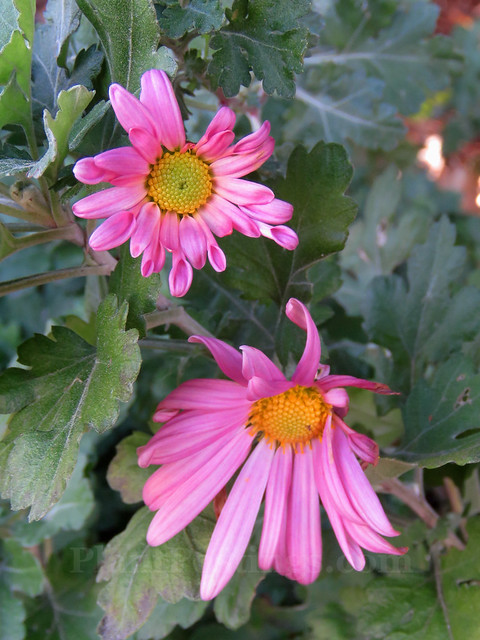
For this Garden Bloggers' Bloom Day, the outdoor blooms are few and far between. I admit I cheated a little, and took these photos a few days ago. However, these particular plants are still in roughly these same stages today and we're having a warming trend, with winds from the southwest.
Shown above, my Mums (Chrysanthemum x. morifolium) continue to bloom, despite several rounds of frosts and freezes. They're such cheery, hardy plants.

These Fuchsias (Fuchsia 'Dark Eyes') have paused as buds, while most of their neighbors closer to the earlier cold winds have succumbed to the elements.

Lesser Calamint (Calamintha nepeta) always amazes me this time of year--frequently sporting a few tiny blooms until the weather is consistently brutal for several days. It probably helps that they're growing as a patch of groundcovers near a corner of the house.

This is a former "bloom." However, the seedheads of Sedum 'Autumn Joy' (S. spectabile) are stunning as they age to a bright mauve. They brighten the landscape in various garden locations for weeks on end.

These Fuchsias (Fuchsia 'Dark Eyes') have paused as buds, while most of their neighbors closer to the earlier cold winds have succumbed to the elements.

Lesser Calamint (Calamintha nepeta) always amazes me this time of year--frequently sporting a few tiny blooms until the weather is consistently brutal for several days. It probably helps that they're growing as a patch of groundcovers near a corner of the house.

This is a former "bloom." However, the seedheads of Sedum 'Autumn Joy' (S. spectabile) are stunning as they age to a bright mauve. They brighten the landscape in various garden locations for weeks on end.

Finally, the 'Ozawa' Allium (A. thunbergii) I celebrated recently remains regal as the blooms close and fade.
Happy Garden Bloggers' Bloom Day! And thanks to Carol at May Dreams Gardens for hosting!


